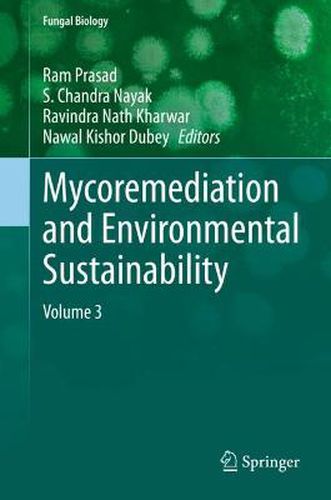Readings Newsletter
Become a Readings Member to make your shopping experience even easier.
Sign in or sign up for free!
You’re not far away from qualifying for FREE standard shipping within Australia
You’ve qualified for FREE standard shipping within Australia
The cart is loading…






This title is printed to order. This book may have been self-published. If so, we cannot guarantee the quality of the content. In the main most books will have gone through the editing process however some may not. We therefore suggest that you be aware of this before ordering this book. If in doubt check either the author or publisher’s details as we are unable to accept any returns unless they are faulty. Please contact us if you have any questions.
Volume 3 covers recent research with expanded coverage on this important area of remediation. Mycoremediation is the form of bioremediation in which fungi-based technology is used to decontaminate the environment. Fungi are among the primary saprotrophic organisms in an ecosystem, as they are efficient in the decomposition of organic matter. Wood-decay fungi, especially white rot, secretes extracellular enzymes and acids that break down lignin and cellulose. Fungi have been proven to be a very cost-effective and environmentally-friendly way for helping to remove a wide array of toxins from damaged environments or wastewater. These toxins include heavy metals, persistent organic pollutants, textile dyes, leather tanning industry chemicals and wastewater, petroleum fuels, polycyclic aromatic hydrocarbon, pharmaceuticals and personal care products, pesticides and herbicides, in land, fresh water and marine environments. Bioremediation of toxic organics by fungi is the most sustainable and green route for cleanup of contaminated sites and we discuss the multiple modes employed by fungi for detoxification of different toxic and recalcitrant compounds including prominent fungal enzymes viz., catalases, general lipase, laccases, peroxidases and sometimes intracellular enzymes, especially the cyrochrome P450 monooxygeneses.
Fungi play an important role in the biogeochemical cycling of manganese and other redox-active metals, which is related to their ability to survive radiation and other oxidative challenges.
This book covers recent research with more detail on the various types of fungi and associated fungal processes used to clean up wastes and wastewaters in contaminated environments, and discusses their potential for environmental applications.
$9.00 standard shipping within Australia
FREE standard shipping within Australia for orders over $100.00
Express & International shipping calculated at checkout
This title is printed to order. This book may have been self-published. If so, we cannot guarantee the quality of the content. In the main most books will have gone through the editing process however some may not. We therefore suggest that you be aware of this before ordering this book. If in doubt check either the author or publisher’s details as we are unable to accept any returns unless they are faulty. Please contact us if you have any questions.
Volume 3 covers recent research with expanded coverage on this important area of remediation. Mycoremediation is the form of bioremediation in which fungi-based technology is used to decontaminate the environment. Fungi are among the primary saprotrophic organisms in an ecosystem, as they are efficient in the decomposition of organic matter. Wood-decay fungi, especially white rot, secretes extracellular enzymes and acids that break down lignin and cellulose. Fungi have been proven to be a very cost-effective and environmentally-friendly way for helping to remove a wide array of toxins from damaged environments or wastewater. These toxins include heavy metals, persistent organic pollutants, textile dyes, leather tanning industry chemicals and wastewater, petroleum fuels, polycyclic aromatic hydrocarbon, pharmaceuticals and personal care products, pesticides and herbicides, in land, fresh water and marine environments. Bioremediation of toxic organics by fungi is the most sustainable and green route for cleanup of contaminated sites and we discuss the multiple modes employed by fungi for detoxification of different toxic and recalcitrant compounds including prominent fungal enzymes viz., catalases, general lipase, laccases, peroxidases and sometimes intracellular enzymes, especially the cyrochrome P450 monooxygeneses.
Fungi play an important role in the biogeochemical cycling of manganese and other redox-active metals, which is related to their ability to survive radiation and other oxidative challenges.
This book covers recent research with more detail on the various types of fungi and associated fungal processes used to clean up wastes and wastewaters in contaminated environments, and discusses their potential for environmental applications.